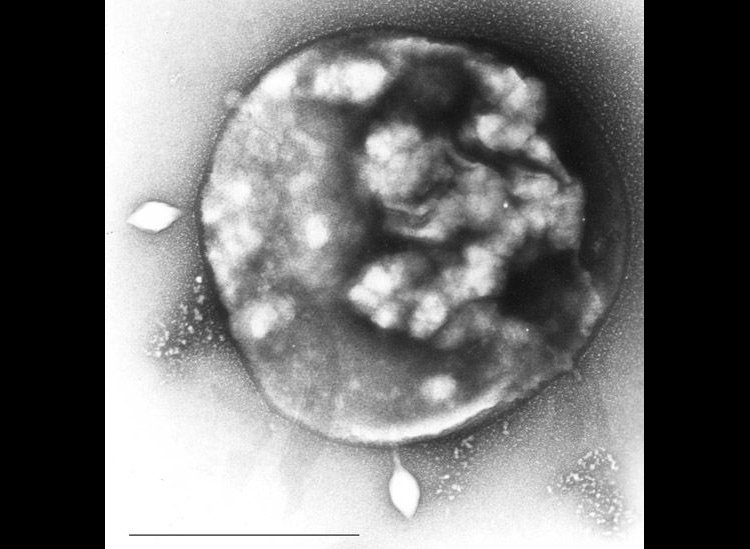| | Sulfolobus
[Public Domain]
Chapter Outline- Description of Prokaryotes
- Classification of Prokaryotes
- Bacteria
- Archaea

Links to external sites will appear in pop-up windows. | | |
Think of an extreme environment, and you will likely find Archaea. The Great Salt Lake (3-5 times saltier than the oceans), the scalding waters of hot springs, and highly acidic deep sea vents are just some of the places Archaea thrive.- Yellowstone - thermophiles and acidophiles
- Salt Lake, Salton Sea, Evaporation Pools - halophiles
- Yoho (glaciers) - psychrophiles
- Mono Lake? - alkaliphiles
- Guts - methanogens
 | | Many Archaea are thermophilic, or "heat lovers", and live in pools such as Cistern Spring at Yellowstone National Park. |
The Archaea in Figure 17I-1 produce methane in the guts of cows. The methane is released into the atmosphere contributing to the greenhouse effect. Methane is relatively rare in the atmosphere, but so was oxygen at one time. It is possible that methanogens like these could dramatically alter the composition of the atmosphere. After that, who knows what kind of species would grow to hold the position humans do now. - Methanopyri - Methanopyrus - Deep sea chimney hyperthermophile, earliest organism?
- Halobacteria - Halobacterium salinarum - halophile
- Halobacteria - Halobacterium halobium - prevalent in Great Salt Lake
- Methanococci - Methanococcus jannaschii - methane-producing thermophile, full gene sequence
The Crenarchaeota are the extremely thermophilic archaebacteria. They require temperatures approaching and even exceeding the boiling point of water (80o to 105oC). The first extreme thermophile discovered by Thomas D. Brock was Sulfolobus in Yellowstone's hot springs. "Sulfolobus grows in sulfur-rich, hot acid springs at temperatures as high as 90 degrees and pH values as low as 1." (Todar, 2002)
Very few species of Korarchaeota have been found. They were only recently discovered in Yellowstone's Obsidian Pool, but molecular analyses suggest that they may be the most primitive organisms alive today. That is to say that they may be most similar to the very first forms of life.
The "nanosized" (very small - 400nm) organism Nanoarchaeum equitans was found in a submarine hot vent.
| |

